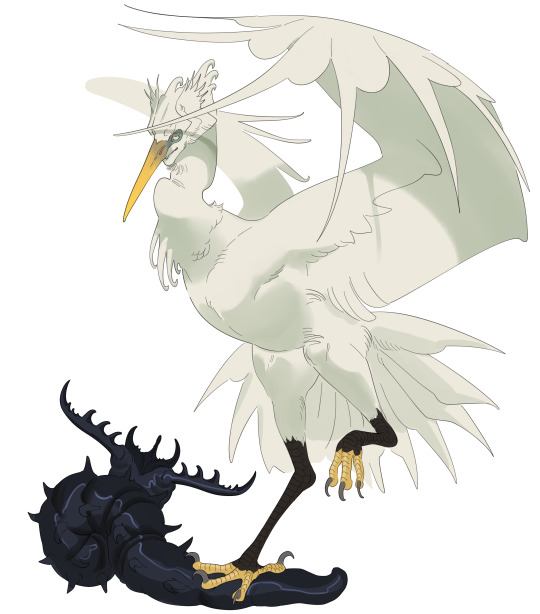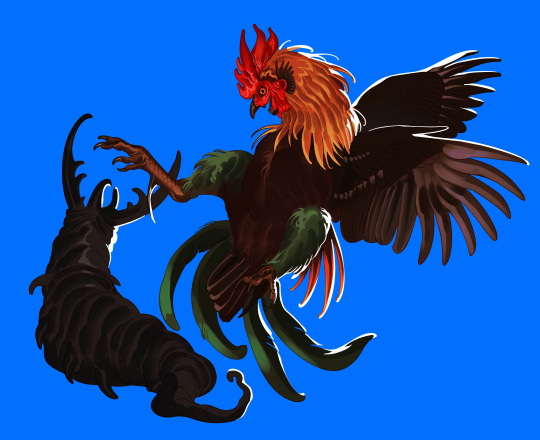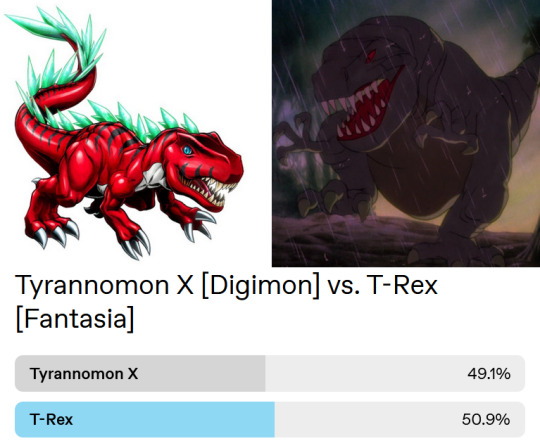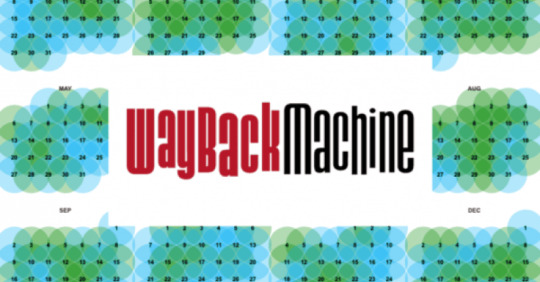#Flight Aggregator
Explore tagged Tumblr posts
Text
Round 3 - Reptilia - Columbiformes




(Sources - 1, 2, 3, 4)
Our next order of birds are the Columbiformes, containing birds commonly known as either “doves” or “pigeons”. It contains one family, Columbidae, with 51 genera divided into 353 species, one of the most diverse families of birds.
Columbiformes are stout-bodied birds with small heads, short legs, relatively short necks, slender bills, and often fleshy ceres. There is no scientific distinction between “doves” and “pigeons”; some columbiformes are simply commonly called “doves” while others are called “pigeons”. Most species have large wings and strong flight muscles, and are some of the strongest fliers of all birds. They are largely herbivorous, feeding on seeds, fruit, and/or foliage. A few species will also eat worms, snails, and insects. Species that feed on seeds tend to be dully colored, while species that feed on fruit are usually colorful. Columbiformes are distributed in almost every terrestrial habitat on Earth, except for the driest areas of the Sahara Desert, Antarctica and its surrounding islands, and the high Arctic.
Columbiformes are known for building rather flimsy nests, using sticks, vegetable matter, and other debris, which may be placed on trees, on rocky ledges, or on the ground, depending on species. The female may either build the nest, with material gathered by the male, or the male builds the nest by himself. A few species nest colonially, others nest in aggregations. Most lay a clutch of one or two white eggs at a time which take 11-30 days to hatch. Both parents care for the young, and both sexes produce "crop milk" to feed their young. This fluid is secreted by a sloughing of epithelial cells from the lining of the crop. Unfledged baby Columbiformes are called “squabs” and are generally able to fly by five weeks old. Fledglings are called “squeakers” once they are weaned, and leave the nest after 25–32 days.
Columbiformes has origins dating back to the Cretaceous, though they did not begin diversifying until after the K-Pg extinction event. Modern Columbids emerged in the Early Miocene.

Propaganda under the cut:
The Domestic Pigeon (Columba livia domestica) was domesticated from the Rock Dove (Columba livia) in the Mediterranean region at least 2000–5000 years ago. They were domesticated for food, ritual sacrifices, and as messengers. One breed, the Homing Pigeon (also known as the Carrier Pigeon), was especially used as a messenger as it was selectively bred for its ability to find its way home over extremely long distances. Today, pigeon fanciers use Homing Pigeons for long-distance pigeon racing. Released or abandoned Homing Pigeons have turned into large feral populations all over the world, usually in large cities as the domestic birds still depend on humans for food. As the world’s oldest domesticated bird, they are still popular pets, and the bird species most suited for a pet lifestyle, with around 800 breeds in a variety of different shapes, colors, and sizes.
Cher Ami was a male Homing Pigeon known for his military service during World War I. The Domestic Pigeon was awarded a Croix de Guerre Medal, a gold medal from the Organized Bodies of American Racing Pigeon Fanciers, and posthumously became the second recipient of the Animals in War & Peace Medal of Bravery. His last message saved 194 men who were caught between the Germans and a barrage of friendly fire. Like the two pigeons who had been released before him, Cher Ami was shot down by the Germans. But after several seconds, he managed to take flight again. Cher Ami made it 40 km (25 miles) back to his loft in just 25 minutes, with a gunshot wound through his breast, a blinded eye, and one leg hanging on by a tendon. The Lost Battalion was saved, while medics worked to save Cher Ami’s life. When he recovered enough to travel, the now one-legged bird was put on a boat to the United States, where he retired for two months before his death.
Some populations of European Turtle Dove (Streptopelia turtur) migrate over 5,000 km (3,107 miles) between northern Europe in the summer and tropical Africa in the winter.
The largest living pigeon is the turkey-sized Victoria Crowned Pigeon (Goura victoria) (see gif above) of New Guinea. It is typically 73 to 75 cm (2.4 to 2.5 ft) long, with an average weight of 2.39 kg (5.3 lb). Some specimens may exceed a length of 80 cm (2.6 ft) and a weight of 3.5 kg (7.7 lb).
Meanwhile, the Plain-breasted Ground Dove (Columbina minuta) is one of the smallest columbiformes, at 14.5–16 cm (5.5–6.5 in) long with a weight of 24–42 g (0.85–1.48 oz). The Dwarf Fruit Dove (Ptilinopus nainus) is heavier but shorter, with a total length of 13–15 centimetres (5.1–5.9 in).
Some extinct Columbiformes are some of the most famous recently extinct birds, and extinct animals in general…
The Passenger Pigeon (Ectopistes migratorius) was a wild pigeon native only to North America. They were once considered the most numerous birds in North America, with pigeon meat commercialized as cheap food, resulting in mass hunting for decades. The Passenger Pigeon required large breeding flocks in order to reproduce, and as its numbers declined it could not reproduce effectively. Widespread deforestation in the 19th century also destroyed breeding habitat. Martha, considered to be the last Passenger Pigeon, died on September 1 1914, at the Cincinnati Zoo. The closest living relatives of Passenger Pigeons are pigeons of the genus Patagioenas, such as the Ruddy Pigeon (Patagioenas subvinacea).
Another famous extinct columbiform is the Dodo (Raphus cucullatus). Dodos were large, flightless pigeons, adapted to the relative absence of predators on the island of Mauritius. It was first recorded by Dutch sailors in 1598, and its relative fearlessness subsequently made it an easy meal for sailors making a “pit stop” on the island. Despite this, the main cause of their extinction was likely the introduction of invasive animals (domestic pigs, macaques, domestic dogs, domestic cats, and rats) to the island, which would have plundered the Dodos’ nests, hunted the Dodos’ chicks, and/or hunted the Dodos themselves. At the same time, humans destroyed the forest habitat of the Dodos. The last widely accepted sighting of a Dodo was in 1662. Even though the rareness of the Dodo was reported already by the 17th century, its extinction was not recognised until the 19th century. This was partly because, for religious reasons, extinction was not believed possible until later proven by Georges Cuvier, and also because many scientists doubted that the Dodo had ever even existed. The bird was first used as an example of human-induced extinction in Penny Magazine in 1833, and has since been referred to as an "icon" of extinction. The Dodo’s closest relative was the also extinct, swan-sized, flightless Rodrigues Solitaire (Pezophaps solitaria), which shared a similar fate. Their closest living relative is the Nicobar Pigeon (Caloenas nicobarica), which is near threatened.
The Socorro Dove (Zenaida graysoni), which once lived on Socorro Island off the west coast of Mexico, has been extinct in the wild since 1972, with only around 156 existing in captivity. The primary reason for their extinction was the introduction of Domestic Cats to the island. Another reason was the establishment of a military base on the island, and overgrazing due to the introduction of Domestic Sheep. Efforts are underway to breed Socorro Doves for reintroduction into the wild, but the island must first be clear of Domestic Cats and Sheep. Almost all privately owned Socorro Doves, as well as several in the captive breeding program, are likely hybrids between Socorro Doves and Mourning Doves (Zenaida macroura). Suspected hybrids are not used for the reintroduction breeding program.
#fav for me because Nicobar Pigeons!#I wanted to write more propaganda about wild species but I’m already super behind on these it’s midnight and I’m tired#animal polls#round 3#Columbiformes#Reptilia
179 notes
·
View notes
Note
‘average flight rising user is salty’ actually statistical error. average flight rising user is very sweet and enhances the gameplay experience for those around them. Saltmines Georg, who lives on tumblr and aggregates 122483856 petty anonymous complaints per day, is an outlier adn should not have been counted
181 notes
·
View notes
Text



so what exactly is a 'crawling beast of the earth' and why did harpies have to develop such extreme modifications just to defend against them?
nobody really knows what the crawling beasts are except the wyrms, and they're not telling anyone. the beasts take many forms but commonly they are eyeless and worm-like with large jaws but no mouths. they do not eat, they show no signs of intelligence, and it seems that all they do is crawl and bite. their bodies have a high heavy metal content and by their very presence they leach toxic waste into the earth around their burrows that destroys organic life. although nobody really knows what they are or where they came from, it's universally acknowledged that crawling beasts are not monsters or natural animals. monsters - not animals - are able to physically touch a crawling beast without being poisoned and you can kill one by ripping it to shreds, but the easiest way to kill one is to throw their bodies on a pyre.
in terms of behaviour they seem to show no response to injury or environmental stimulus but always crawl or burrow towards the highest concentration of large living creatures they can sense (through means unknown). if one gets within biting distance they will bite.. even if there's a layer of topsoil between you and them. they do not notice others of their own kind and can mindlessly form huge aggregations underneath villages or settlements, fouling one another until eventually the sheer volume and mass of the pile-up spills onto the surface.
the purpose of the beasties, in this setting, is to provide a common enemy that can be a catalyst for human and monster cooperation. they're kind of a macguffin that makes everything else happen, but i like them because they're undefined and terrifying for everybody. one big crawler will destroy a field of crops in one night and make the soil barren, and that can be the difference between making it through the winter and starving, in a small village. crawlers are the reason flighted harpies fear touching the ground. the whole land is infested with them (the sea, too) and their numbers are only growing.
for most harpies, attaining the size and strength (and talons) necessary to fight a crawling beast would reduce their ability to neatly and accurately forage or hunt their normal animal prey. so instead of everyone developing this weaponry, instead only one guy in a flock does, and thereafter he's the flock's bodyguard. kings suck at hunting and foraging. because even regular eagle harpies are naturally pretty big and pointy, they are the first choice for human falconers who want a partner who can swoop down, snatch up a crawling beast, and drop it on a fire. solitary monsters fare the best here since they usually don't attract any crawling beasties, except when they're pressganged by humans (or other monsters) into helping the general pest control effort.
only wyrms are known to hunt and eat crawling beasts.
#ice storm over kosa#normal earth. then one day bam here's the crawling beasts. and THEN monsters happened#more on that later
275 notes
·
View notes
Text









Wasp-Mimic Sawfly - Allantus viennensis
Having recently showcased 3 species of splendid Orthopterans over the last few posts, it's time to change viewpoints and examine pictures of a different insect order. At first glance, today's specimen may after to be a banded Wasp, but a closer look (or reading this post's title) reveals the identity of this insect as a Sawfly. While this specie's mimicry is very convincing when compared against several varieties of solitary Wasp, a lack of a wasp-waist (petiole) indicates that we aren't looking at a typical Hymenopteran. The visible saw-shaped "stinger" near the tip of the abdomen further lends from credibility to this mimic, but of course, it isn't a stinger. Instead of a venomous defensive tool, this Sawfly wields a saw-shaped ovipositor designed to make incisions into plants and strategically place her eggs safely. This is the way of the Sawfly, and if a specie is lucky enough to mimic the appearance of a more defensive Wasp specie in order for predators to leave them be as they search for rose plants, so much the better.
For this specie in particular (and as mentioned in an earlier post), the adult insect relies on roses as a suitable host for its eggs, but it may also be able to partake in a rose's nectar and pollen as a source of food, along with the nectar and pollen of other nearby flowers. That is of course, if other pollinators haven't taken the nectar reward first, if more aggressive pollinators (such as Wasps or Woolcarder Bees) don't force them away, and if they actually partake in eating flower-related consumables. Without a means to defend themselves beyond mimicry and flying away, a Sawfly must choose its battles carefully. Nevertheless, flight and deception are better defenses than what the wingless, soft-bodied, wriggling larvae have in their arsenal. As they feed, it's likely they would curl up to protect themselves or fall to the soil below in they sensed a nearby threat or intruder, such as a gardener. If you're a decorative gardener with a fondness for roses, this may be one specie to watch out for. Although I spoke in an earlier post that this specie may skeletonize rose leaves, it would appear was mistaken. Looking at records of this insect's feeding behavior in Europe (its original habitat), the larvae can defoliate roses entirely with their feeding habits (even eating petals on occasion) and appear to pupate within the stem(s) of the rose plant after growing large enough. An aggregation of this larvae could prove to be a gardener's nightmare!
Pictures were taken on June 4, 2020 with a Google Pixel 4.
#jonny’s insect catalogue#ontario insect#sawfly#wasp mimic sawfly#hymenoptera#insect#june2020#2020#entomology#nature#invertebrates#arthropods#photography#animals
28 notes
·
View notes
Text
The impoverished imagination of neoliberal climate “solutions

This morning (Oct 31) at 10hPT, the Internet Archive is livestreaming my presentation on my recent book, The Internet Con.

There is only one planet in the known universe capable of sustaining human life, and it is rapidly becoming uninhabitable by humans. Clearly, this warrants bold action – but which bold action should we take?
After half a century of denial and disinformation, the business lobby has seemingly found climate religion and has joined the choir, but they have their own unique hymn: this crisis is so dire, they say, that we don't have the luxury of choosing between different ways of addressing the emergency. We have to do "all of the above" – every possible solution must be tried.
In his new book Dark PR, Grant Ennis explains that this "all of the above" strategy doesn't represent a change of heart by big business. Rather, it's part of the denial playbook that's been used to sell tobacco-cancer doubt and climate disinformation:
https://darajapress.com/publication/dark-pr-how-corporate-disinformation-harms-our-health-and-the-environment
The point of "all of the above" isn't muscular, immediate action – rather, it's a delaying tactic that creates space for "solutions" that won't work, but will generate profits. Think of how the tobacco industry used "all of the above" to sell "light" cigarettes, snuff, snus, and vaping – and delay tobacco bans, sin taxes, and business-euthanizing litigation. Today, the same playbook is used to sell EVs as an answer to the destructive legacy of the personal automobile – to the exclusion of mass transit, bikes, and 15-minute cities:
https://thewaroncars.org/2023/10/24/113-dark-pr-with-grant-ennis/
As the tobacco and car examples show, "all of the above" is never really all of the above. Pursuing "light" cigarettes to reduce cancer is incompatible with simply banning tobacco; giving everyone a personal EV is incompatible with remaking our cities for transit, cycling and walking.
When it comes to the climate emergency, "all of the above" means trying "market-based" solutions to the exclusion of directly regulating emissions, despite the poor performance of these "solutions."
The big one here is carbon offsets, which allows companies to make money by promising not to emit carbon that they would otherwise emit. The idea here is that creating a new asset class will unleash the incredible creativity of markets by harnessing the greed of elite sociopaths to the project of decarbonization, rather of the prudence of democratically accountable lawmakers.
Carbon offsets have not worked: they have been plagued by absolutely foreseeable problems that have not lessened, despite repeated attempts to mitigate them.
For starters, carbon offsets are a classic market for lemons. The cheapest way to make a carbon offset is to promise not to emit carbon you were never going to emit anyway, as when fake charities like the Nature Conservancy make millions by promising not to log forests that can't be logged because they are wildlife preserves:
https://pluralistic.net/2022/03/18/greshams-carbon-law/#papal-indulgences
Then there's the problem of monitoring carbon offsetting activity. Like, what happens when the forest you promise not to log burns down? If you're a carbon trader, the answer is "nothing." That burned-down forest can still be sold as if it were sequestering carbon, rather than venting it to the atmosphere in an out-of-control blaze:
https://pluralistic.net/2021/07/26/aggregate-demand/#murder-offsets
When you bought a plane ticket and ticked the "offset the carbon on my flight" box and paid an extra $10, I bet you thought that you were contributing to a market that incentivized a reduction in discretionary, socially useless carbon-intensive activity. But without those carbon offsets, SUVs would have all but disappeared from American roads. Carbon offsets for Tesla cars generated billions in carbon offsets for Elon Musk, and allowed SUVs to escape regulations that would otherwise have seen them pulled from the market:
https://pluralistic.net/2021/11/24/no-puedo-pagar-no-pagara/#Rat
What's more, Tesla figured out how to get double the offsets they were entitled to by pretending that they had a working battery-swap technology. This directly translated to even more SUVs on the road:
https://en.wikipedia.org/wiki/Criticism_of_Tesla,_Inc.#Misuse_of_government_subsidies
Harnessing the profit motive to the planet's survivability might sound like a good idea, but it assumes that corporations can self-regulate their way to a better climate future. They cannot. Think of how Canada's logging industry was allowed to clearcut old-growth forests and replace them with "pines in lines" – evenly spaced, highly flammable, commercially useful tree-farms that now turn into raging forest fires every year:
https://pluralistic.net/2023/09/16/murder-offsets/#pulped-and-papered
The idea of "market-based" climate solutions is that certain harmful conduct should be disincentivized through taxes, rather than banned. This makes carbon offsets into a kind of modern Papal indulgence, which let you continue to sin, for a price. As the outstanding short video Murder Offsets so ably demonstrates, this is an inadequate, unserious and immoral response to the urgency of the issue:
https://pluralistic.net/2021/04/14/for-sale-green-indulgences/#killer-analogy
Offsets and other market-based climate measures aren't "all of the above" – they exclude other measures that have better track-records and lower costs, because those measures cut against the interests of the business lobby. Writing for the Law and Political Economy Project, Yale Law's Douglas Kysar gives some pointed examples:
https://lpeproject.org/blog/climate-change-and-the-neoliberal-imagination/
For example: carbon offsets rely on a notion called "contrafactual carbon," this being the imaginary carbon that might be omitted by a company if it wasn't participating in offsets. The number of credits a company gets is determined by the difference between its contrafactual emissions and its actual emissions.
But the "contrafactual" here comes from a business-as-usual world, one where the only limit on carbon emissions comes from corporate executives' voluntary actions – and not from regulation, direct action, or other limits on corporate conduct.
Kysar asks us to imagine a contrafactual that depends on "carbon upsets," rather than offsets – one where the limits on carbon come from "lawsuits, referenda, protests, boycotts, civil disobedience":
https://www.theguardian.com/commentisfree/cif-green/2010/aug/29/carbon-upsets-offsets-cap-and-trade
If we're really committed to "all of the above" as baseline for calculating offsets, why not imagine a carbon world grounded in foreseeable, evidence-based reality, like the situation in Louisiana, where a planned petrochemical plant was canceled after a lawsuit over its 13.6m tons of annual carbon emissions?
https://earthjustice.org/press/2022/louisiana-court-vacates-air-permits-for-formosas-massive-petrochemical-complex-in-cancer-alley
Rather than a tradeable market in carbon offsets, we could harness the market to reward upsets. If your group wins a lawsuit that prevents 13.6m tons of carbon emissions every year, it will get 13.6 million credits for every year that plant would have run. That would certainly drive the commercial imaginations of many otherwise disinterested parties to find carbon-reduction measures. If we're going to revive dubious medieval practices like indulgences, why not champerty, too?
https://en.wikipedia.org/wiki/Champerty_and_maintenance
That is, if every path to a survivable planet must run through Goldman-Sachs, why not turn their devious minds to figuring out ways to make billions in tradeable credits by suing the pants off oil companies?
There are any number of measures that rise to the flimsy standards of evidence in support of offsets. Like, we're giving away $85/ton in free public money for carbon capture technologies, despite the lack of any credible path to these making a serious dent in the climate situation:
https://www.spglobal.com/commodityinsights/en/market-insights/latest-news/energy-transition/072523-ira-turbocharged-carbon-capture-tax-credit-but-challenges-persist-experts
If we're willing to fund untested longshots like carbon capture, why not measures that have far better track-records? For example, there's a pretty solid correlation between the presence of women in legislatures and on corporate boards and overall reductions in carbon. I'm the last person to suggest that the problems of capitalism can be replaced by replacing half of the old white men who run the world with women, PoCs and queers – but if we're willing to hand billions to ferkakte scheme like carbon capture, why not subsidize companies that pack their boards with women, or provide campaign subsidies to women running for office? It's quite a longshot (putting Liz Truss or Marjorie Taylor-Greene on your board or in your legislature is no way to save the planet), but it's got a better evidentiary basis than carbon capture.
There's also good evidence that correlates inequality with carbon emissions, though the causal relationship is unclear. Maybe inequality lets the wealthy control policy outcomes and tilt them towards permitting high-emission/high-profit activities. Maybe inequality reduces the social cohesion needed to make decarbonization work. Maybe inequality makes it harder for green tech to find customers. Maybe inequality leads to rich people chasing status-enhancing goods (think: private jet rides) that are extremely carbon-intensive.
Whatever the reason, there's a pretty good case that radical wealth redistribution would speed up decarbonization – any "all of the above" strategy should certainly consider this one.
Kysar's written a paper on this, entitled "Ways Not to Think About Climate Change":
https://political-theory.org/resources/Documents/Kysar.Ways%20Not%20to%20Think%20About%20Climate%20Change.pdf
It's been accepted for the upcoming American Society for Political and Legal Philosophy conference on climate change:
https://political-theory.org/13257256
It's quite a bracing read! The next time someone tells you we should hand Elon Musk billions to in exchange for making it possible to legally manufacture vast fleets of SUVs because we need to try "all of the above," send them a copy of this paper.

If you'd like an essay-formatted version of this post to read or share, here's a link to it on pluralistic.net, my surveillance-free, ad-free, tracker-free blog:
https://pluralistic.net/2023/10/31/carbon-upsets/#big-tradeoff
#pluralistic#neoliberalism#climate#market worship#economics#economism#there is no alternative#carbon credits#climate emergency#contrafactual carbon#carbon upsets#apologetics#murder offsets#indulgences
232 notes
·
View notes
Text

Whoever wishes to obtain a clear idea of Parisian student life, or at least that phase of it which is just now brought to the world's attention in consequence of the riots in the Latin quarter, would do well to read Victor Hugo's "Les Miserables." Those who have read that remarkable and justly famous book will find it worth while to reperuse those chapters which describe the "surprise" given by Thalymes [sic] and his three fellow students to Fantine and her three feminine associates, together with the account of the barricade erected by students during the attempted revolution of 1830 [sic]. Victor Hugo's fascinating story is a picture drawn from life, as abundant testimony proves. But in studying it care must be taken to avoid mistaking a part for the whole. That mistake is what has led to such false and mischievous interpretations of "The Fast Set at Harvard," and other printed descriptions of certain phases of American undergraduate life. Grantaire, who drinks two bottles of wine at a single sitting and then hiccough out a long harangue in which he argues, with a considerable display of learning and eloquence, that God is a feeble and shortsighted being, that things are the only realities, and that to get drunk is the summum bonum, no doubt represents an actual and not inconsiderable variety of young men who are always to be found in the far-famed Latin quarter of Paris. But at Grantaire's elbow sits Eujolras [sic], who is sober, chaste, studious, brave unto martyrdom for the principles of human liberty as he understands them, brilliant and eloquent with an inspiration that is as much loftier in its source than the fumes of alchohol, as the eagle's flight is higher than that of the dunghill fowl. Every enlightened country has peculiarities of university life that deserve separate analysis and comparison one with another. One peculiarity in France is that university life there centers in the capital. It is not so to anything like the same extent in any other great nation. In Germany there are half a dozen or more universities scattered widely in situation, each of which is a rival of the University of Berlin, and some, as Tublngton and Hallo, enjoy a far greater reputation. In England, Oxford and Cambridge, both comparatively remote from the capital, are still, as they have been for many centuries, the chief seats of learning; while London University is of very recent origin, and though not without features of striking excellence, is as yet neither famous, influential nor largely attended. Indeed, it is not a university at all in the sense of the word usually accepted on either side of the Atlantic. In America, as is well known, neither our political nor our commercial capital is a chief center of academic activity. For these reasons, if for no other, there could not possibly be such a state of things in any other city on the globe as has lately been witnessed in Paris, where an outbreak of students successfully defied the whole police force of the city, made headway for a time against battalions of soldiers, menaced the legislative assembly and came near to causing an overturn of the existing government. Another peculiarity is that in Paris students are at once more homogeneous in their mode of life than elsewhere. They are more homogeneous because they are massed in a single section of the city to a degree not known out of Paris, an aggregation that includes many thousands and is not confined to the representatives of any one institution of learning. And they are less homogeneous in that they do not dwell in dormitories and are not responsible to any recognized central authority. This last is true in a measure of university life in Germany and the United States, but to a far smaller extent.
Source: The Indianapolis Journal, 2 October 1893
17 notes
·
View notes
Note
Are there any motifs or symbols associated with the character? How are they represented, in their design, personality or in some other way?
I'm going to cheat and do Minthe's shards in aggregate because they tend to share design elements with each other! All of Minthe's shards have at least one of the following, if not more: max height, silver eyes, green hair, or a feather in their hair.
Only height was deliberate at the start, and Aoife cheats that because the minimum Highlander height is just taller than the maximum Midlander height. The only reason she's not a Midlander is that I like Highlander animations better.
Silver eyes is also more consistent with only Moth Orchid having green eyes (so far). I designed him first without intending him to be a Minthe shard, but he fit in with my friends' ideas of Ronkan characters so I just moved him over. I'm justifying it by saying that shards from the reflections are going to vary more than shards from the Source. Otherwise, Minthe's shards have silver eyes (Miranda's heterochromia is a result of Allagan magicks).
The green hair is because we're playing an anime game and I like green hair. Usually I try to get a dark green like Rowan and Minthe, but you can't get that shade of green on every race. In those cases, it's usually black with green highlights or ashy green/black like Aoife. Lucky Apple has a lighter green because I designed her after my favorite Flight Rising Dragon, Sylvestris (Minthe's 13th shard) is just a purple catte and I felt like it would clash more than it wouldn't, and Miranda is from the same group of Miqo'te that would become the G tribe, so red hair.
The feathers in the hair was almost completely on accident - I just like them because it's a head piece that wouldn't hide Rowan's ponytail. Aoife's headpiece is from the Yafaemi Striking set, Moth Orchid and Lamiales just happen to have feathers in their hairstyles, but by the time I got to Lucky Apple I decided to make it deliberate. Miranda lacks it because she lacks whimsy, alas.
Thanks for the ask!
...Oh yeah and they all have plant names other than Miranda.
#ask meme#azem minthe#...and the rest#i don't feel like tagging them lmao#oh also the feathers are a shard only thing#something something growing through trials something soemthing
12 notes
·
View notes
Text
Hey Vic I'm on the plane
Yes the one flight I never have to worry about. The flight home.
I'm knackered
I think it went very well. The reviews are good. Thank you for talking about Tom, Charlie and Sadie, the aggregators picked it up and got your name trending. Well done.
Did I smile enough
Yes, eventually. And good marks for thanking the fans.
So is it over? Did I finish?
Yes, you completed the terms of the contract. You're done.
I'm raising my glass
You know you have two more in March
What's the situation with the parties next week? Fabian said he's going to the HBO party
Well Fabian works for HBO. You're invited to the Hoard party of course
Any others?
We're working on it
Thank god Jamie was there
Yes, it was helpful that he was
I don't know why it's so exhausting. Everyone's nice but I feel like a melting candle
It is a ridiculous amount of people to be sure. But you handled it fairly well. I think you are on your way.
On my way to where?
That's up to you, darling
Can't wait to come home
9 notes
·
View notes
Text
ROUND 1 ROUNDUP
Thanks to everyone who participated in Round 1! Just for fun, I thought I would gather up some stats I've found so far. You can get an idea of the individual results here, as always, but this post will have some aggregate data. So, let's get right to it:
Of course, keep in mind that all ranking comparisons are not really indicative of how popular any given candidate is (except maybe the series aggregates at the end), but rather only specifically how much more popular they were than their opponent. So, it's very much anyone's game!
Anyway thanks again to all participants, and I hope for your continued participation in Round 2 (currently ongoing!) and beyond!
Under the cut since I got a bit carried away with the categories...
------
Ornithischian Bracket: Top 3 Candidates

1st place: Chomp [Dinosaur King], at 87% (over Armadon [Primal Rage])
2nd place: Styracavus [Flight Rising], at 85.3% (over Riff [Barney])
3rd place: Url [Dinosaur (2000)], at 83.7% (over Darkyloseid [DC])
------
Saurischian Bracket: Top 3 Candidates

1st place: Amped Raptor [Magic the Gathering], at 81.6%, over Indoraptor [Jurassic Park]
2nd place: Meganium [Pokemon], at 80.8%, over Denver [Denver, the Last Dinosaur]
3rd place: Raptor Red [Raptor Red], at 77.3, over Voodoo Microraptor [Dinosaur Arcade]
------
Megatheropod Bracket: Top 3 Candidates

1st place: Fang [Primal], at 88.2%, over Bonehead [Dinosaucers]
2nd place: Rexy [Night at the Museum], at 86.9%, over General Scales [Star Fox]
3rd place: Greymon [Digimon], at 85.2%, over Jurrac Titano [Yu-Gi-Oh!]
------
Overall Top 3

1st place: Fang [Primal], at 88.2%, over Bonehead [Dinosaucers]
2nd place: Chomp [Dinosaur King], at 87% (over Armadon [Primal Rage])
3rd place: Rexy [Night at the Museum], at 86.9%, over General Scales [Star Fox]
------
Top Performing Series (Vote %, No Conditions)

1st place: Night at the Museum (84.65)
2nd place: Google Dino Run (84.3)
3rd place: Raptor Red (77.3)
------
Top Performing Series (Vote %, Only Series With Average Or Above # of Candidates)

1st place: Prehistoric Planet (66.16)
2nd place: Paleo Pines (65.54)
3rd place: Pokemon (65.34)
------
Top Performing Series (% of Matches Won, Only Series With Average Or Above # of Candidates

1st place: Prehistoric Planet (100%), from 5 candidates
2nd place: Digimon (92.86%), from 14 candidates
3rd place: Monster Hunter (90.91%) from 11 candidates
------
Closest Match

Tyrannomon X [Digimon] (49.1%)
vs.
T-Rex [Fantasia] (50.9%)
------
And that's everything I felt like tracking! If you have other questions feel free to ask, although I may not have tracked the right data for it; for example I did not keep track of actual vote counts at all because I didn't realize I should until I had already not done so for several weeks, and really don't feel like doing so.
#dinosaurs#dinosaur#digimon#prehistoric planet#monster hunter#monhun#saurnament#saurnament stats#round 1#r1#r1r#night at the museum#fantasia#paleo pines#magic the gathering#mtg
11 notes
·
View notes
Text
Syria’s Central Bank transported large shipments of U.S. dollars and euros to Russia by air between March 2018 and September 2019, The Financial Times reported on December 15, citing data from the Russian customs aggregator Import Genius.
According to the FT, the Assad regime sent nearly two tons of $100 and 500 euro banknotes to Moscow’s Vnukovo Airport. Over the period in question, 21 flights carried more than $250 million in cash from Syria to Moscow.
Records reviewed by the FT show that the funds were deposited into two Russian banks: Russian Financial Corporation (RFK) and TsMR Bank, both under U.S. sanctions. RFK is a subsidiary of Rosoboronexport, Russia’s state arms exporter.
A source familiar with the Syrian Central Bank’s finances told the FT that by 2018, Syria’s foreign reserves were nearly depleted. Due to international sanctions, the bank relied on cash payments to procure Russian wheat, pay for printing currency, and cover “defense” expenses. The source said the payments were made using “what was available in the vault.”
Russian customs documents also indicate that military components and newly printed Syrian banknotes — produced by Russia’s state-run printing company Goznak — were sent to Syria over several years, including both before and after the cash shipments. However, there is no evidence that the two Russian banks involved handled cash transfers from Syria or any other country outside the 2018–2019 period.
The FT noted that these cash transfers occurred when “the then Syrian dictator was indebted to the Kremlin for military support and his relatives were secretly buying assets in Russia.” In 2019, the FT wrote that relatives of Bashar al-Assad had acquired at least 20 apartments in Moscow since 2013.
7 notes
·
View notes
Text
The pop-sci takeaway from the Apollo program is always "if we'd only kept building more Saturn Vs we'd be on Mars by now!", which is of course very tempting to believe - it's an iconic rocket, undeniably very cool. Unfortunately the truth is, imo, more along the lines of Saturn V being a historic mistake from the start; the post-Apollo stagnation was assured more or less the moment we agreed on taking the fastest route - a big booster lofting the whole mission at once.
So it's like, launch cost is almost entirely dominated by the fixed cost of infrastructure - this is why Shuttle became such a white elephant by the way, the original hopeful cost figures were predicated on a twenty-to-fifty a year flight rate. We achieved, at best, nine (and then more or less immediately after the Challenger happened, but this is a whole other tangent). Saturn V had two real payloads - the Apollo missions, and Skylab. In the absence of sustained 1969 mission cadence and all the enormous funding commitments that entailed, the huge fixed infrastructure of Saturn V would have rusted on the Cape Canaveral coast most of the year waiting for a single mission, even if they hadn't closed the production lines before the first piloted Apollo mission even launched.
How could this have been different? Plausibly we could have gone with an EOR (Earth Orbit Rendezvous) or even split LOR (Lunar Orbit Rendezvous) plan, much like the original plans proposed by Von Braun at the pre-NASA Army Balistic Missile Agency - flotillas of smaller Saturn 1B (~20t to LEO) or Saturn C3 (~50t to LEO) launches carrying the crew module, the Trans-Lunar-Injection stage, the lunar lander, and propellant for all of the above to staging points in Low Earth Orbit, where they'd be put together like god's own lego set and sent on their way. This, notably, would have allowed two things - one is amortization of the launch infrastructure over more flights, which also allows for learning-curve cost reduction as tooling gets better at handling successive launchers. The other is amortization of the enormous fixed cost of a space launch complex and it's concomitant "standing army" of technicians and their support staff over a great many launches. Notably, unlike the massively oversize Saturn V, those launchers would also have had the ability to cost-effectively launch other payloads during 'off season' - commsats, military birds, weather satellites, space probes, whatever - more cost effectively, driving down the effective cost of a single launch yet further.
This would all be water under the bridge, of course, if it hadn't convinced everyone since that we simply can't do missions to the Moon without a hundred tons of throw weight to LEO - after all, that's what the sole example looked like! One study carried out by the 2000s Augustine Commission (a government advisory group founded in the wake of the Ares Program's failure to produce a big new rocket), found that even then we could have achieved lunar missions with only slightly upgraded versions of the existing EELV (Evolved Expendable Launch Vehicle) fleet and some orbital aggregation. This was unfortunately discarded in favor of yet another big rocket though. I guess that's just the way things go, but it is unfortunate imo!
23 notes
·
View notes
Text

NSF-funded research heads to the international space station on NASA's SpaceX CRS-32 mission
ISS national lab-sponsored investigations aim to enhance drug manufacturing and develop new materials for aerospace, defense, energy, and robotics
Three investigations funded by the U.S. National Science Foundation (NSF) and sponsored by the International Space Station (ISSInternational Space Station) National Laboratory are launching on SpaceX’s 32nd Commercial Resupply Services (CRS) mission, contracted by NASANational Aeronautics and Space Administration. These experiments leverage the microgravityThe condition of perceived weightlessness created when an object is in free fall, for example when an object is in orbital motion. Microgravity alters many observable phenomena within the physical and life sciences, allowing scientists to study things in ways not possible on Earth. The International Space Station provides access to a persistent microgravity environment. environment to advance fundamental science that could lead to improved pharmaceutical manufacturing, new materials with valuable industrial applications, and the next generation of soft active materials with lifelike properties.
These projects build on a strong, multi-year collaboration between the ISS National Lab and NSF, which allocates millions of dollars to space-based projects within the fields of tissue engineering and transport phenomena, including fluid dynamics. To date, more than 30 projects funded by NSF and sponsored by the ISS National Lab have launched to the orbiting laboratory, with nearly 70 additional projects preparing for flight. Below are details about the three NSF-funded investigations launching on NASA’s SpaceX CRS-32.
Improving Medicine Manufacturing
An investigation by Rensselaer Polytechnic Institute (RPI), supported by Tec-Masters, builds on previous research to examine protein fluid flow and clumping—a problem that occurs during manufacturing of protein-based pharmaceuticals that affects the quality of the drug.
“Proteins are used to make various therapies and must be concentrated in medicines to avoid needing to administer large amounts of fluid,” says Amir Hirsa, professor of mechanical, aerospace, and nuclear engineering at RPI. “But above a certain concentration, the proteins tend to form aggregates or clump.”
On Earth, studying protein behavior is complicated by interactions between the solution and the container used to hold it. But on the ISS, researchers can use the Ring-Sheared Drop module to form liquid into a self-contained sphere held between two rings.
Hirsa and his team can use this device to study protein motion and create more accurate models of the factors that lead to clumping, especially during drug manufacturing and dispensation to patients. The team also can test computer models that predict the behavior of proteins of vastly different concentrations and types, such as hormones and antibodies. Findings from this research could help uncover ways to avoid or reverse protein clumping, which would have a significant impact on the pharmaceutical industry.
“Another very important aspect of this work is making this data, which is so difficult to get, available to other scientists through open data repositories,” says Joe Adam, a research scientist at RPI. “Other scientists may see something even more interesting than we do.”
Developing New Materials
An investigation from the University of Alabama at Birmingham, supported by Leidos, will examine the formation of ceramic composites, which have valuable applications in several industries, including aerospace, defense, and energy. The study focuses on polymer-derived titanium carbide and silicon carbide composites that have electrical conductivity, are stable at high temperature, can be made into almost any shape and size, and are lightweight yet strong.
“These materials can be used in different extreme conditions, such as high temperatures and highly acidic or oxidative environments, where other materials become unstable or cannot survive,” says Kathy Lu, a professor in the Department of Mechanical and Materials Engineering.
Studying these composites in microgravity could reveal unique behaviors that cannot be replicated on Earth. Findings from this research could inform new techniques for ground- and space-based manufacturing of materials with specific properties for applications such as heat exchangers, electric systems, energy storage, electrodes, and microsystems.
“Nobody has studied microgravity’s effects on these ceramics, and the results could be helpful for the broader family of ceramics and other possible additives, such as fibers and nanoscale materials,” Lu says.
Studying Active Matter
A research team at the University of California, Santa Barbara (UCSB) will leverage microgravity to study active matter—microscopic particles that use energy to produce motion—and its effects on the separation of non-mixable liquids. These liquids, such as oil and water, separate into concentrated droplets of one substance dispersed in the other, a phenomenon known as active liquid-liquid phase separation (LLPS). This investigation, supported by Redwire Space Technologies, seeks a better understanding of active LLPS, which plays a key role in physics, materials science, engineering, and biology.
“Active fluids are made of billions of small molecular motors that push and pull on each other and generate a turbulent flow, like a windy day stirs the water on a beach,” says UCSB professor Zvonimir Dogic. “A long-term goal is using active matter in microfluidic devices to stir and control the separation of two substances. We’re trying to create simplified systems that start to mimic biology.”
Active LLPS could be used to create materials with lifelike properties, such as the ability to move, change shape, and self-repair, that could be used to develop more lifelike robotics.
SpaceX CRS-32 is scheduled to launch no earlier than April 21, 2025, at 4:15 a.m., from Launch Complex 39A at NASA’s Kennedy Space Center in Florida.
IMAGE: Left: A drop of protein solution less than two and a half centimeters in diameter formed in the RSD onboard the International Space Station. Right: An image showing a computed Newtonian flow diagram for the drop. Credit J. Adam
2 notes
·
View notes
Text
Ixigo New User Coupon | Flat 12% Off on First Flight Booking
Planning your next trip? With ixigo, your travel becomes more affordable and convenient. The travel aggregator makes it a piece of cake to book flights, buses, trains, and hotels.

2 notes
·
View notes
Text
First, degrowth identifies growth as fundamental to the capitalist system and develops a critique of that. Growth tends to enrich property owners and the wealthy, leaving the rest behind. And the environmental consequences of continuous growth are disastrous. Degrowthers are alert to the “destructive forces” that spring from what Marxists call the productive forces. Second, its critique of growth is based firmly on leftist positions: the deepening of democracy, feminism, and anti-racism. Inasmuch as reducing aggregate consumption is its goal, the focus is on the rich and the rich world. Third, its critique of capitalism is not restricted to property relations (private versus nationalized property) but extends to the nature and purposes of technology and of consumption. Degrowthers don’t assume that needs and desires are god-given. They have a critical take on the “manufacture of needs.” Finally, degrowthers recognize that the most fundamental human need is for a habitable planet. They are more sober, more clear-eyed than most on the Left in recognizing that facing up to the multiple environmental crises will require much more than nationalization of the energy sector and investments in renewable energy and electric vehicles (EVs). It requires an extreme reduction in energy use and material throughput, at least in the rich world, a reduction that, while focused on the highest energy users, will affect working people, too, above all in consumption of such goods as flights and beef. Their pitch is that a world of “public luxury and private sufficiency,” with greater equality and democracy, less hierarchy, and much more free time, would enable the quality of life for the masses to improve immeasurably, even if some consumer goods disappear from the menu.
47 notes
·
View notes
Text










Flying West (No. 6)
San Francisco and the surrounding San Francisco Bay Area are a global center of economic activity and the arts and sciences, spurred by leading universities, high-tech, healthcare, finance, insurance, real estate, and professional services sectors. As of 2020, the metropolitan area, with 6.7 million residents, ranked 5th by GDP ($874 billion) and 2nd by GDP per capita ($131,082) across the OECD countries, ahead of global cities like Paris, London, and Singapore. San Francisco anchors the 13th most populous metropolitan statistical area in the United States with 4.6 million residents, and the fourth-largest by aggregate income and economic output, with a GDP of $729 billion in 2022. The wider San Jose–San Francisco–Oakland Combined Statistical Area is the nation's fifth-most populous, with around nine million residents, and the third-largest by economic output, with a GDP of $1.32 trillion in 2022. In the same year, San Francisco proper had a GDP of $252.2 billion, and a GDP per capita of $312,000. San Francisco was ranked fifth in the world and second in the United States on the Global Financial Centres Index as of September 2023. Despite a continuing exodus of businesses from the downtown area of San Francisco,[43][44] the city is still home to numerous companies inside and outside of technology, including Salesforce, Uber, Airbnb, X Corp., Levi's, Gap, Dropbox, and Lyft.
In 2022, San Francisco had more than 1.7 million international visitors – the fifth-most visited city from abroad in the United States after New York City, Miami, Orlando, and Los Angeles – and approximately 20 million domestic visitors for a total of 21.9 million visitors. The city is known for its steep rolling hills and eclectic mix of architecture across varied neighborhoods, as well as its cooling summers, fog, and notable landmarks, including the Golden Gate Bridge, cable cars, and Alcatraz, along with the Chinatown and Mission districts. The city is home to a number of educational and cultural institutions, such as the University of California, San Francisco, the University of San Francisco, San Francisco State University, the San Francisco Conservatory of Music, the de Young Museum, the San Francisco Museum of Modern Art, the San Francisco Symphony, the San Francisco Ballet, the San Francisco Opera, the SFJAZZ Center, and the California Academy of Sciences. Two major league sports teams, the San Francisco Giants and the Golden State Warriors, play their home games within San Francisco proper. San Francisco International Airport (SFO) offers flights to over 125 destinations while a light rail and bus network, in tandem with the BART and Caltrain systems, connects nearly every part of San Francisco with the wider region.
Source: Wikipedia
#Don Edwards San Francisco Bay National Wildlife Refuge#Cargill Salt#San Francisco Bay Area#San Francisco#Oakland#Berkeley#Pacific Ocean#Golden Gate#San Francisco–Oakland Bay Bridge#Alcatraz Island#travel#original photography#vacation#tourist attraction#landmark#architecture#landscape#countryside#on board#plane#USA#deep blue sky#clouds#California#West Coast#farmland#fields#nature#flora#ships
6 notes
·
View notes
Text
This day in history

#10yrsago Tech companies should do something about harassment, but not this https://www.theverge.com/2014/12/8/7350597/why-its-so-hard-to-stop-online-harassment
#10yrsago Information Doesn’t Want to Be Free: the audiobook, read by Wil Wheaton https://craphound.com/info/2014/12/10/information-doesnt-want-to-be-free-audiobook/
#10yrsago World-beating email EULA https://memex.craphound.com/2014/12/10/world-beating-email-eula/
#10yrsago Great Firewall of Cameron blocks Parliamentary committee on rendition/torture https://b2fxxx.blogspot.com/2014/12/virgin-media-blocking-website-of.html
#10yrsago Police, technology and bodycams https://www.eff.org/deeplinks/2014/12/obamas-plan-better-policing-good-bad-and-body-cameras
#10yrsago NYC theater overrules MPAA rating for Snowden documentary https://twitter.com/tommycollison/status/541787027315101696
#5yrsago Youtube copyright trolls Adrev claim to own a homemade MIDI rendition of 1899’s Flight of the Bumblebee https://www.ghostwheel.com/2019/12/08/the-absurdity-of-youtubes-copyright-claim-system/
#5yrsago NYC paid McKinsey $27.5m to reduce violence at Riker’s, producing useless recommendations backed by junk evidence https://www.propublica.org/article/new-york-city-paid-mckinsey-millions-to-stem-jail-violence-instead-violence-soared
#5yrsago Chinese law professor’s social media denunciation of facial recognition in the Beijing subway system https://docs.google.com/document/d/18L4FuiUjGN5Y2j_4-VnYi2U116KWEIaG4pxVp78x-ss/edit?tab=t.0
#5yrsago Distinguishing between “platforms” and “aggregators” in competition law https://memex.craphound.com/2019/12/10/distinguishing-between-platforms-and-aggregators-in-competition-law/
#5yrsago Pete Buttigieg’s prizewinning high-school essay praising Bernie Sanders: “the power to win back the faith of a voting public weary and wary of political opportunism” https://jacobin.com/2019/12/pete-buttigieg-essay-contest-bernie-sanders/
#5yrsago Amazon’s Ring surveillance doorbell leaks its customers’ home addresses, linked to their doorbell videos https://gizmodo.com/ring-s-hidden-data-let-us-map-amazons-sprawling-home-su-1840312279
5 notes
·
View notes